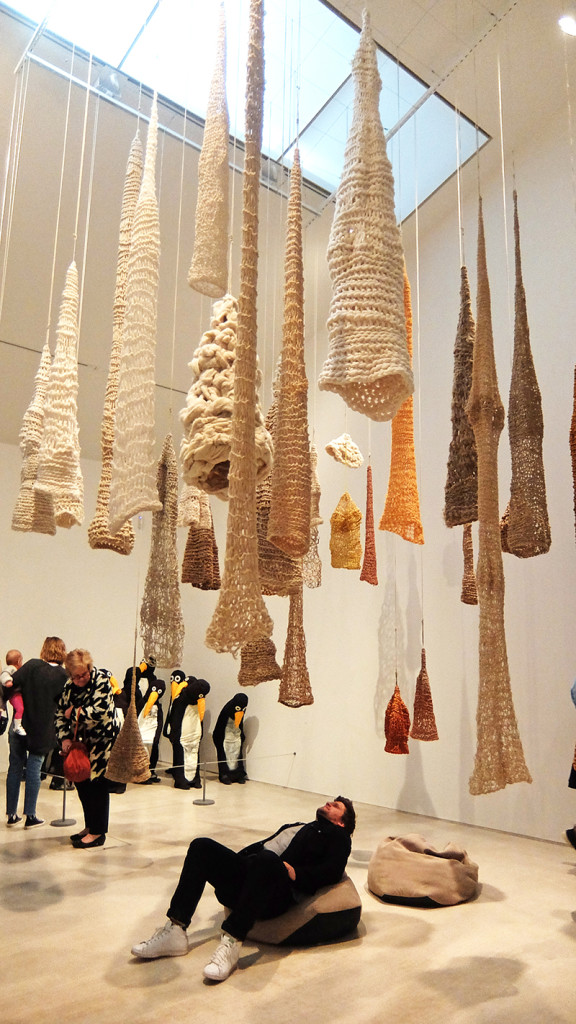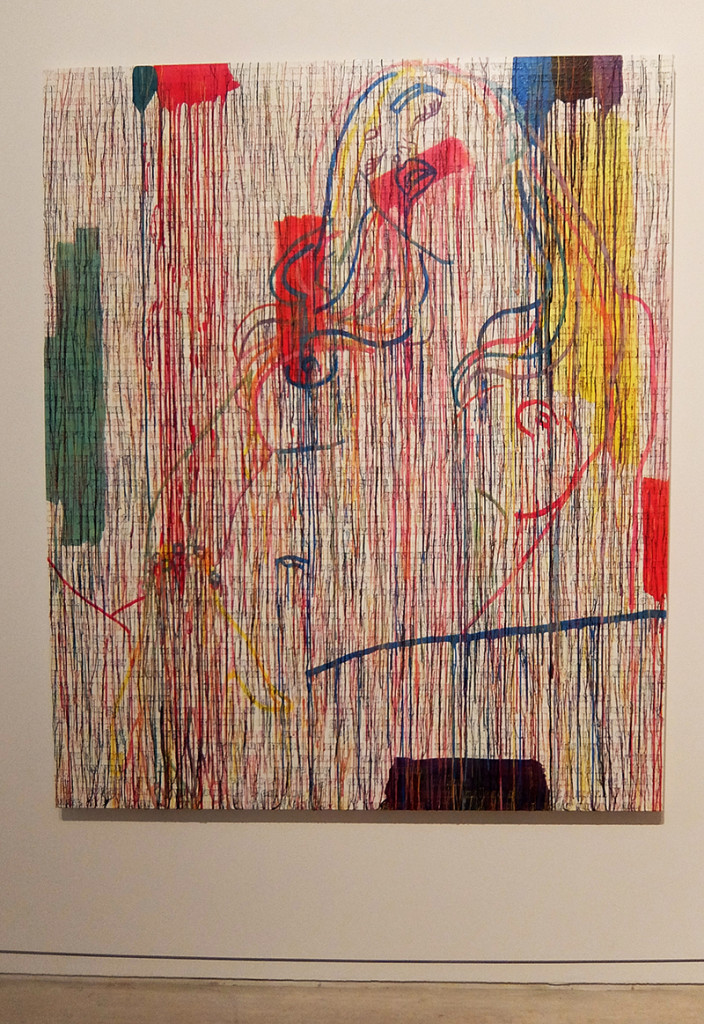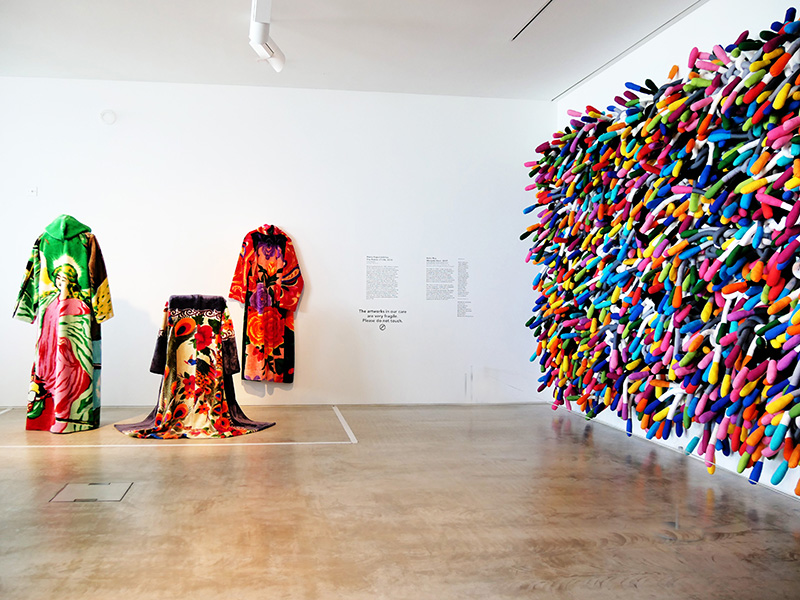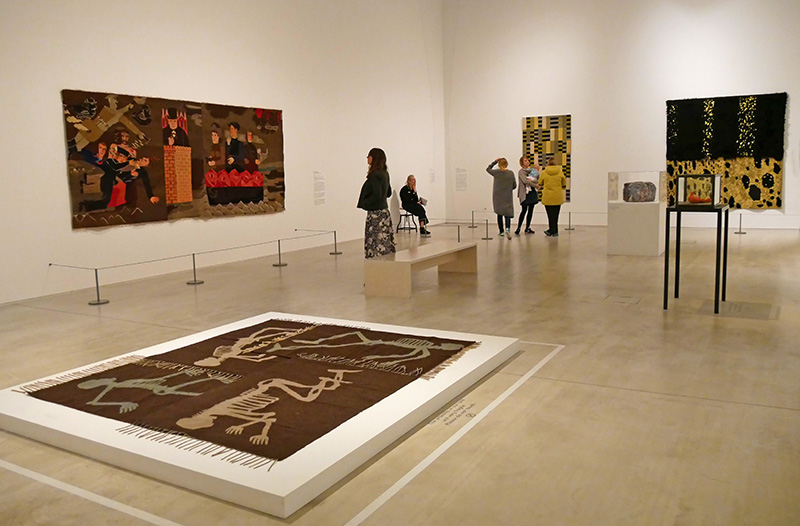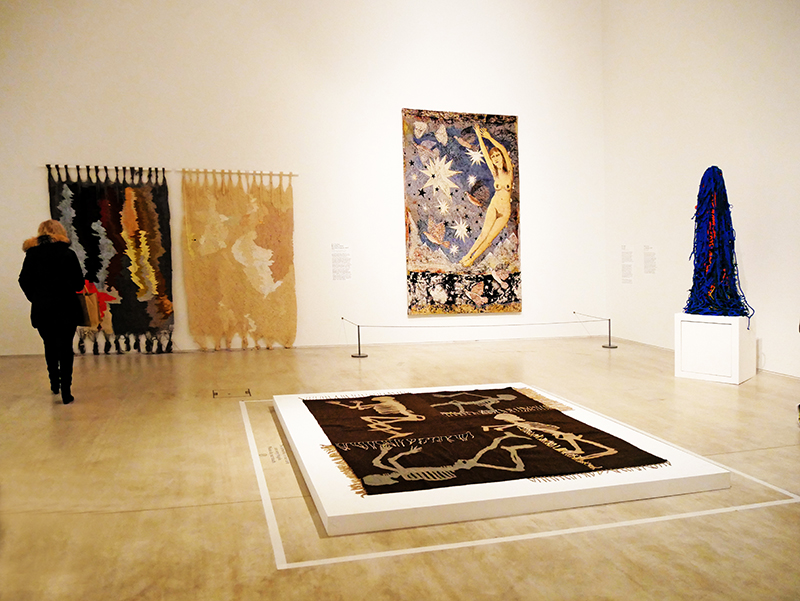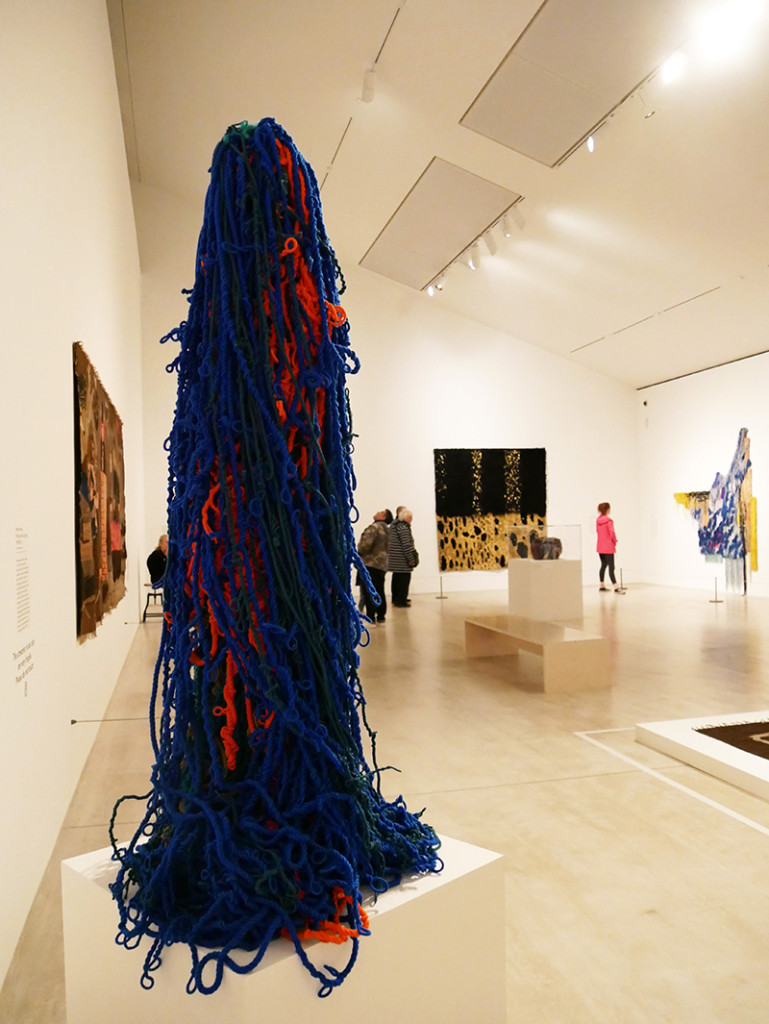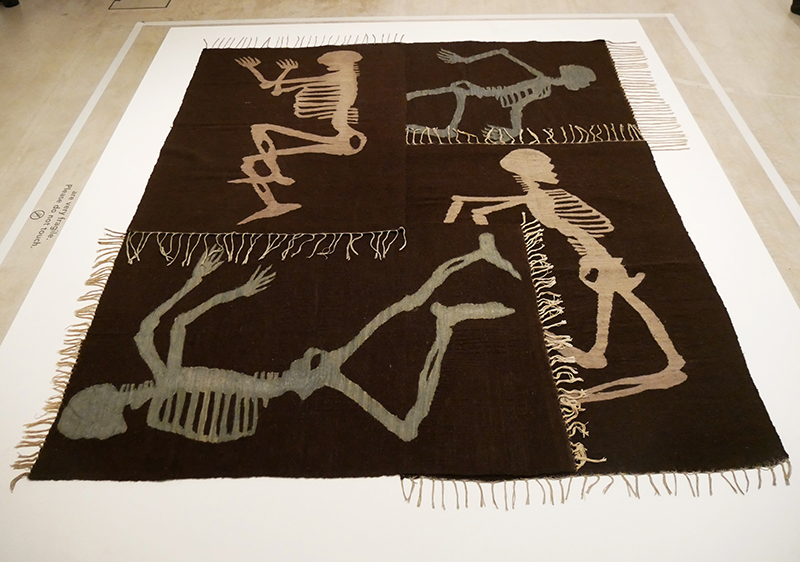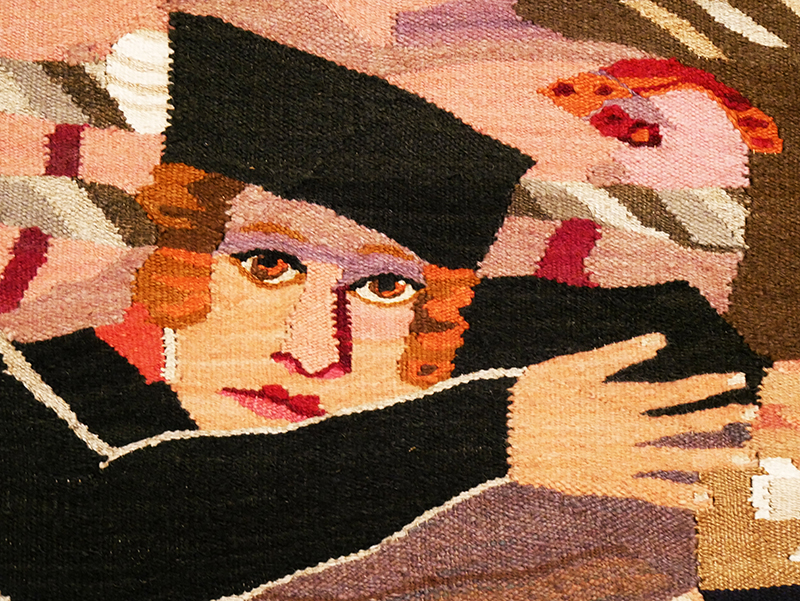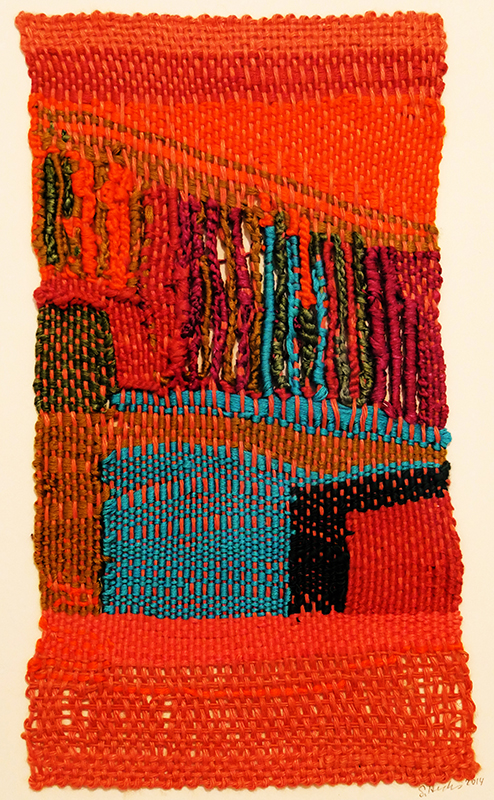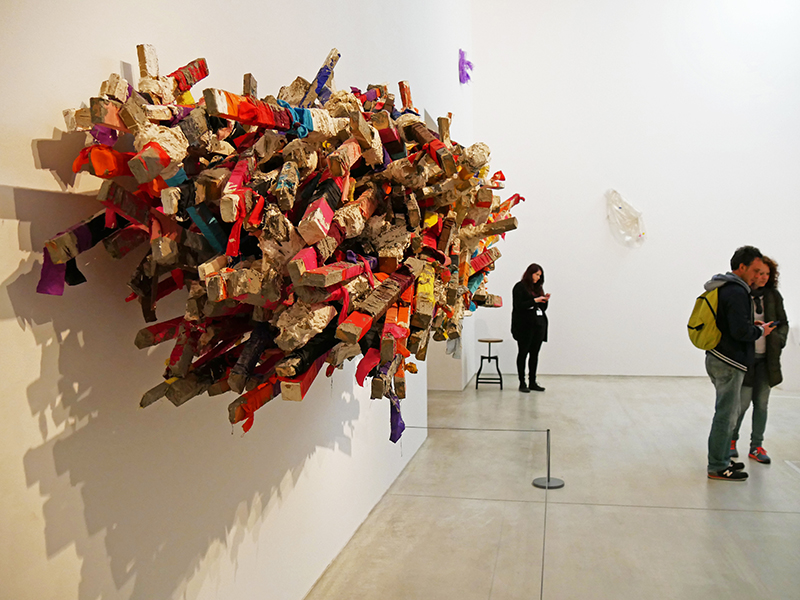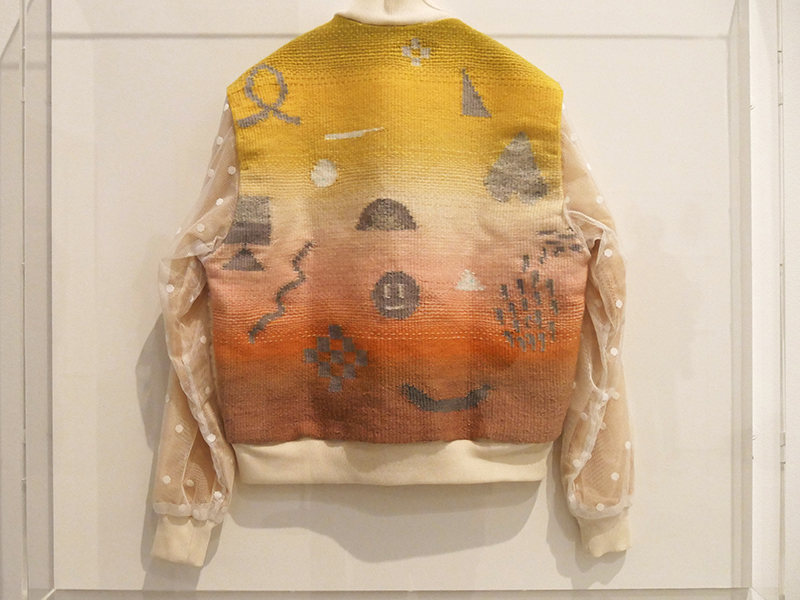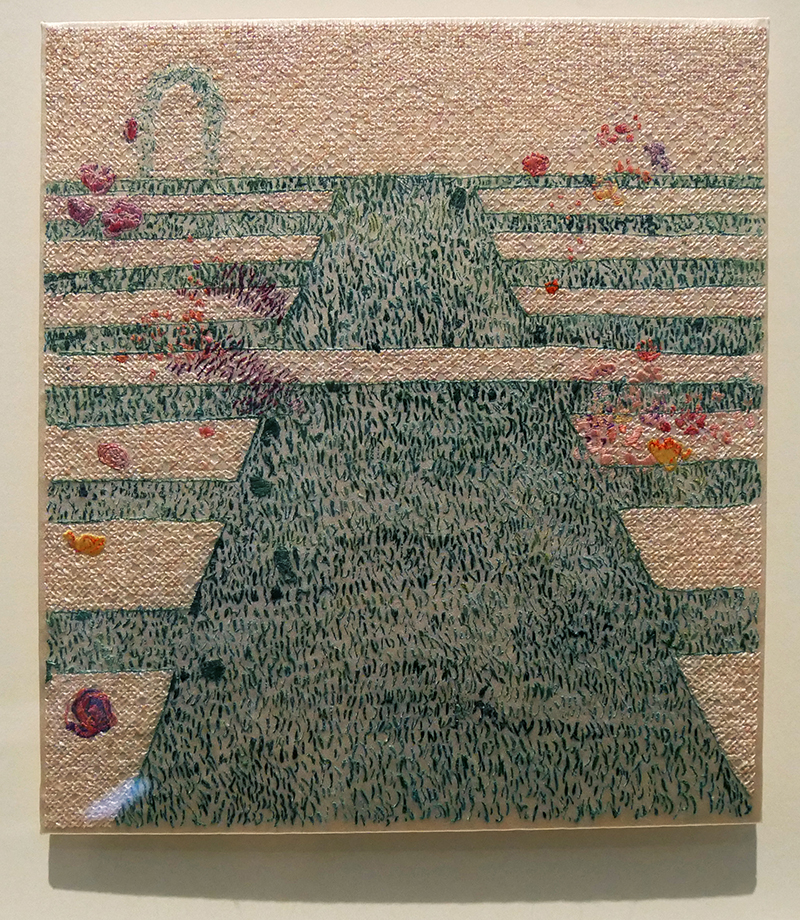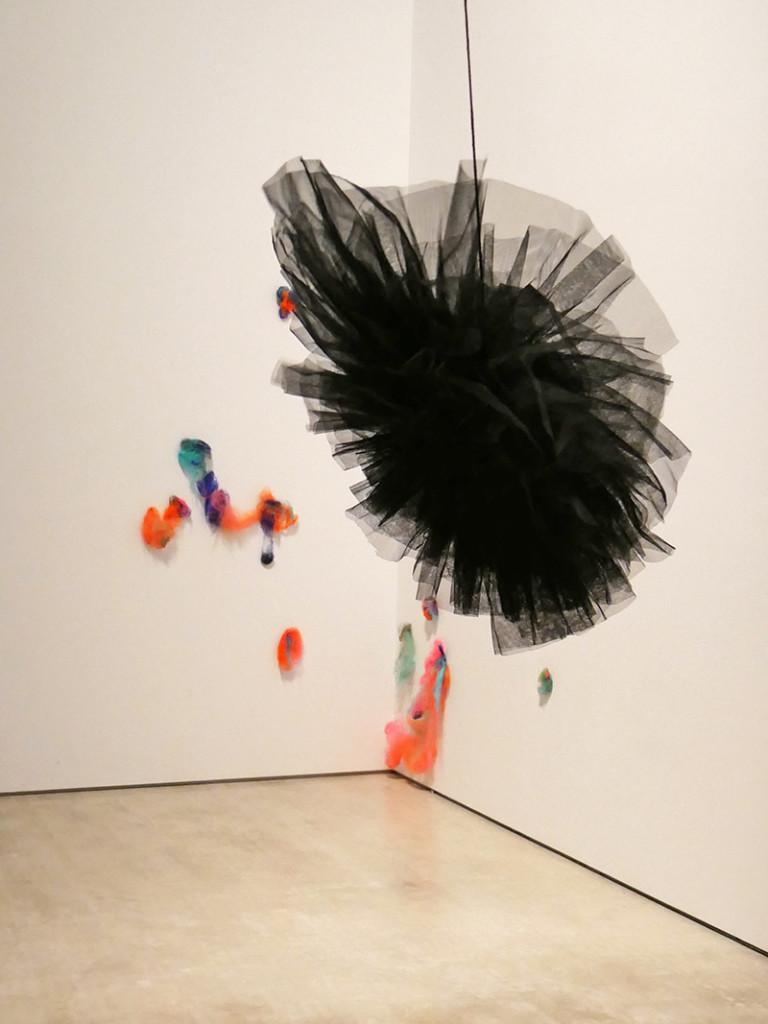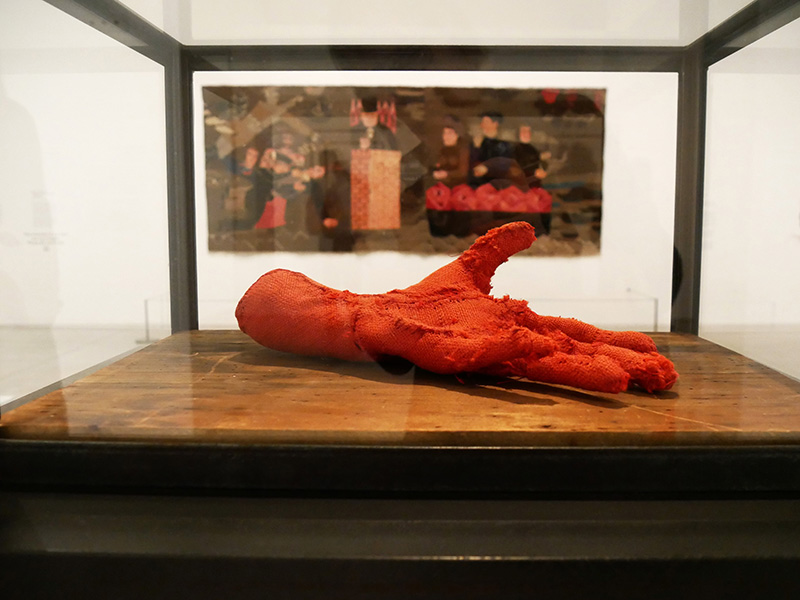
This exhibition held at the Turner Contemporary in Margate, Kent, from 28 January to 7 May 2017 was announced in my blog post of 22 February 2017. My visit during the Easter weekend was a very positive experience. Designed by David Chippenfield and opened in 2011, the museum is the cultural highlight of the small seaside resort of Margate. While this exhibition, that generated great international interest, was very well attended by locals, we did not see any other foreigners.
The exhibition organisers have pursued a policy of presenting works which focus on textile materials. They had been looking for artists who work with textile-related materials and who were not very well-known. Many of the featured artists are newcomers from the Venice Biennials, the Documenta in Kassel and other great art biennials, so the search remained very close to the fine art scene.
When the first list of candidates was drawn up, it included only women, and subsequently this became a selection principle. “Women very actively engage in the use of materials, in particular textiles and threads”, says museum director Victoria Pomery. There is also a statement by Eva Hesse which reads, “Excellence has no sex”. The organisers feared protest on the part of the participants, but this did not materialise.
Unlike the “Textiles in Fine Art” exhibitions held in recent years, this show focuses on making and materials as well more labour-intensive and meditative techniques. According to the organisers, these are more often encountered in Scandinavian countries, and consequently the latter were rather strongly represented. The 44 artists / artist pairs comprised 30 from Europe, seven from Iceland and Norway, eight from the UK and four each from France and Germany. A further eight artists were from the USA, three from South America, two from North Africa and one from Japan. Interestingly, only 17 participants were younger than 50 years of age.
To my eyes, the selection seemed to have been made without applying the usual blinkered approach pursued by (male) art curators, so visitors were able to make real discoveries next to the well-known names. Some of my own discoveries were Christiane Löhr, Rivane Neuenschwander and Arna Óttarsdóttir.
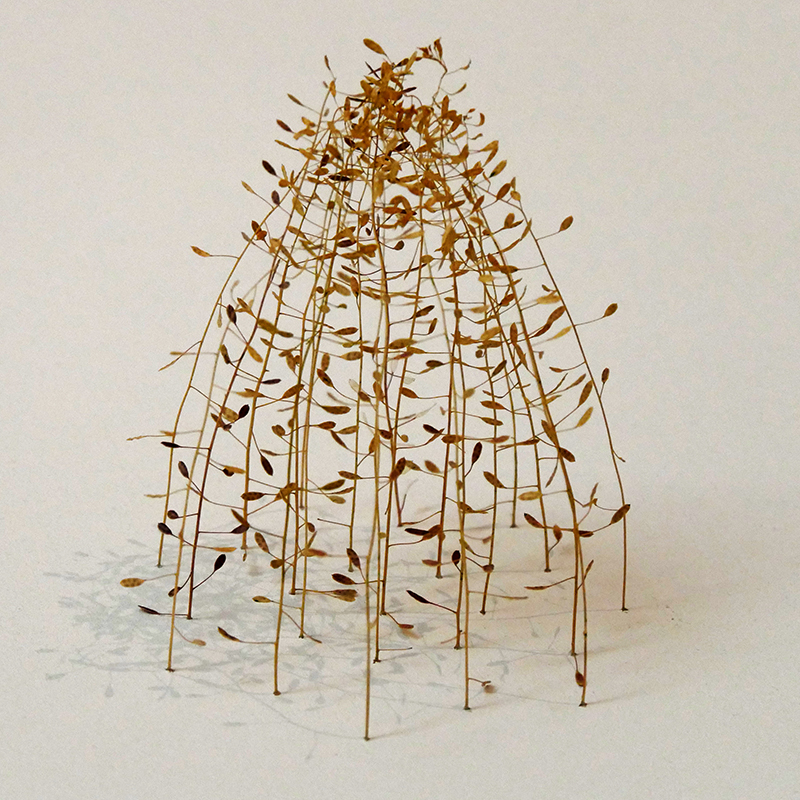
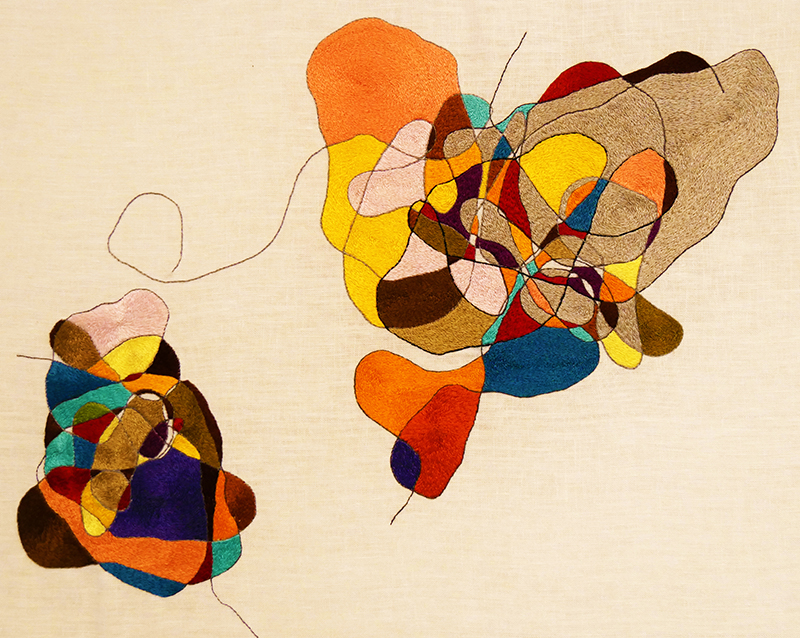
Of course, this is an art show rather than a textile exhibition, but one that presents a great deal of craftsmanship, often excellent but sometimes abysmal in quality. As is so often the case, there are almost no participants from the actual textile art scene, with several laudable exceptions: Maureen Hodge, the former Director of the Tapestry Department of the Edinburgh College of Art, and her former student, Anna Ray, very prominently feature in the show. Aside from long-standing famous names such as Hannah Ryggen, Anni Albers, Sonia Delaunay and Sheila Hicks, the textile artists I already knew included Hrafnhildur Arnadóttir. In 2011 she received the Nordic Award in Textiles, currently the most highly endowed textile award in the world. Norwegian artist Ann Cathryn November Høibo also has a background in textiles.
The comment published by Joanna Mattera, the former editor of Fiberarts, thus still holds true: “Don’t shoot the messenger, but it’s pretty obvious to me that the “fiber” or “textile” adjective is nowhere connected to the artists who have broad art-world careers.“
Even the artists represented here are subject to prejudice, as expressed in the accompanying film when the makers emphasise that their work is not about craft, but always about expressing ideas and feelings.
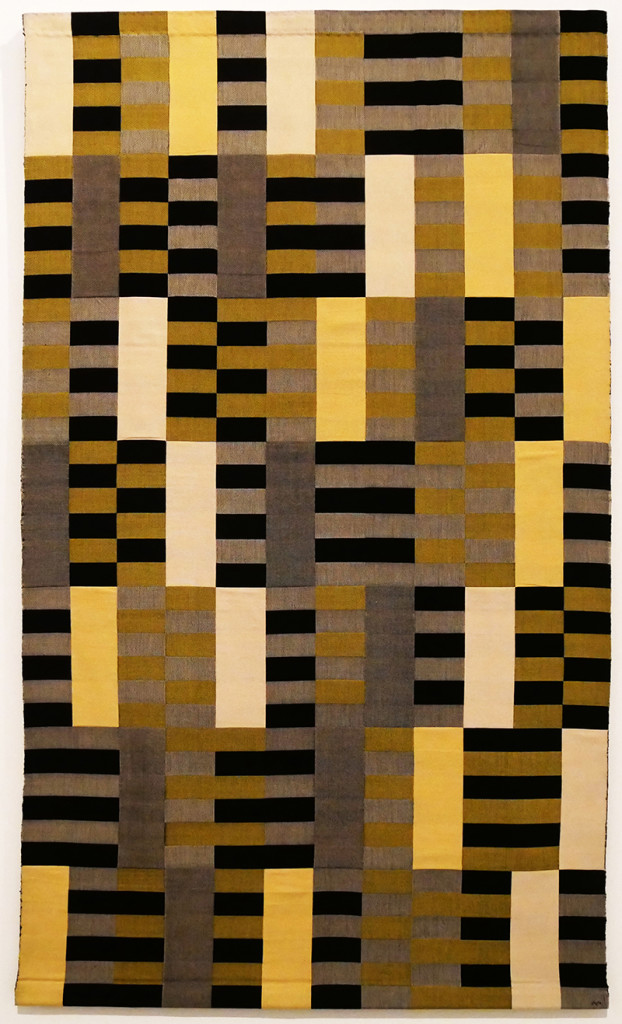
The exhibition is dominated by large-format sculptures, and a great plus was that about ten works could be produced on the spot. These include the large commissioned installations by Kashif Nadim Chaudry, Anna Ray and Paola Anziché which were set up with assistance from many local helpers. Another is the fragile horse hair pillar by Christiane Löhr, created using horse hair from stables located in the surroundings of Margate!
Other striking sculptures were those by Phyllida Barlow, Akiko Tezuko, Karla Black, Sheila Hicks and Annette Messager. It was wonderful to be able to see the small sculptures by Eva Hesse, whom I had not seen in any of the recent art & textile exhibitions
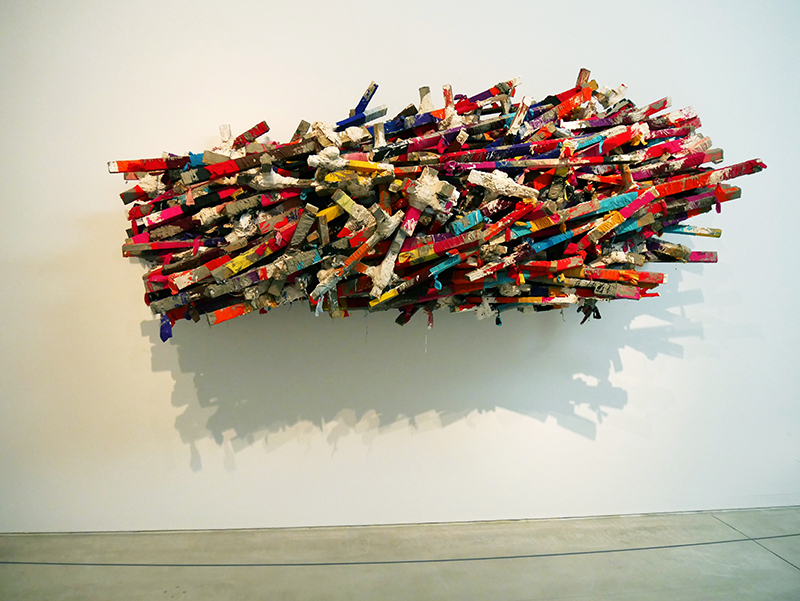
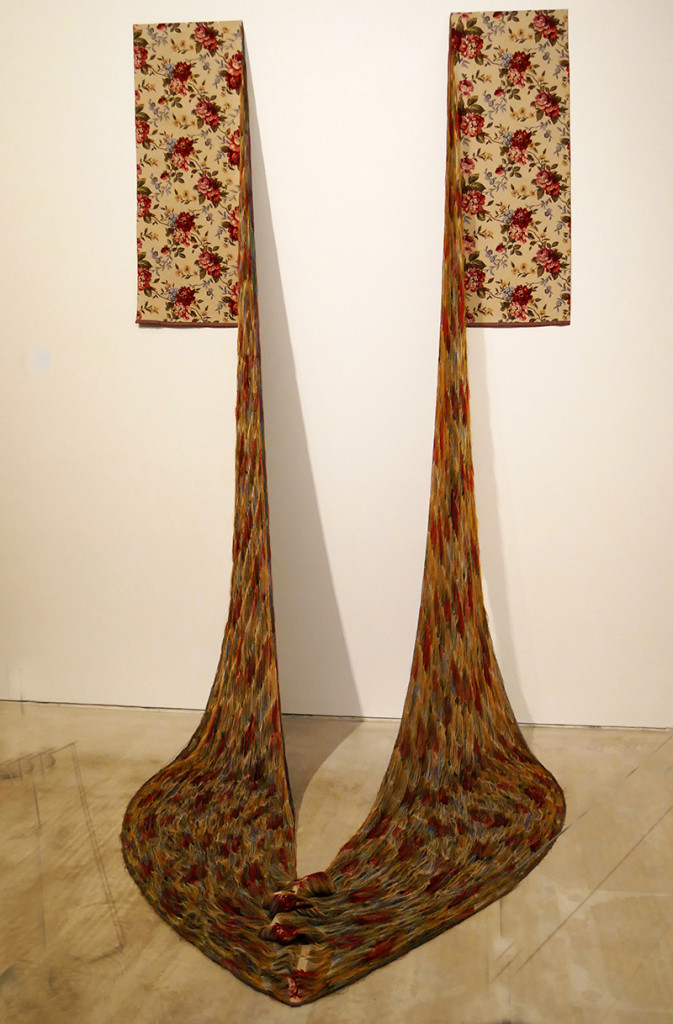
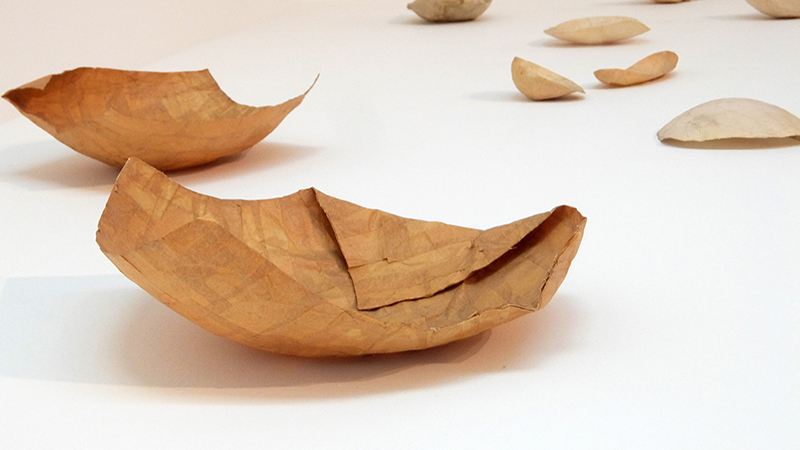
As regards traditional techniques, weaving and embroidery are well represented. Weavers include both the older and the younger generations: Hannah Ryggen, Anni Albers, Maureen Hodge, Kiki Smith, Mona Hatoum, Regine Bogat, Ann Cathryn November Høibo and Arna Óttarsdóttir. The works by Kiki Smith and Mona Hatoum were made in craft workshops, a fact that, regrettably, was not discussed. Since the liberation of textile art in the Sixties and Seventies during the Lausanne Biennals, the hand of the artist has been of great importance. This is not the case in the world of fine art, where weaving is done in series, for instance by the De Keukelaere brothers at the “Flanders Tapestries” workshop, and sold as “multiples”. The larger the gap between the artist and maker, the more problematic the result. The exhibition as a whole, however, includes many hand-made items. Only the Portuguese artist Joanna Vasconcelos has an “art factory” with many assistants, as is often the case in the visual arts.
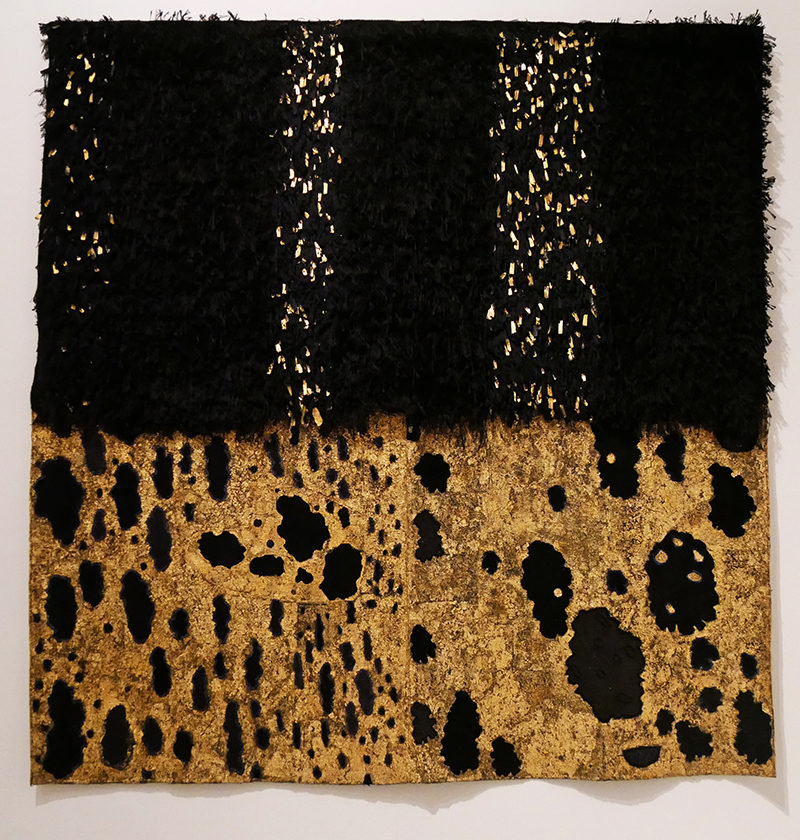
The embroidered works, most of them probably hand-crafted, were made by Geta Brătescu, Maria Roosen, Rivane Neuenschwander, Ghada Amer, Tatiana Trouvé, Sidal Paaske and Anna Ray. Embroidery is frequently encountered now in both art and textile art exhibitions because it lends itself particularly well to expressing artists’ feelings.
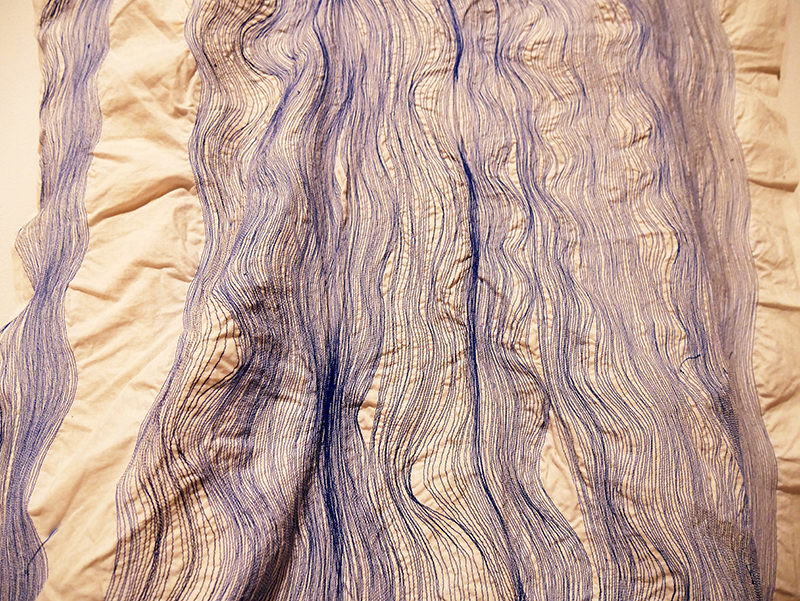
Generally speaking, the show presents a pleasing new development in the series of Textiles in Fine Art exhibitions. So far these have featured mainly the older, well-known names in textile art as well as artists linked to the art scene who use textile materials (such as “Decorum” at the Musée d’Art Moderne, Paris, in 2013/2014 and “Kunst & Textil” held in Wolfsburg and Stuttgart in 2014/2015, see blog entries of 25 December 2013). Next in line are exhibitions which celebrate well-known names in textile art as re-discoveries, such as “Tapisseries Nomades” and “The Textile Room”, both held in 2016, as well as new solo shows presenting Frida Hansen, Hannah Ryggen, Sheila Hicks and Françoise Grossen. These are all discussed in my blog and can be found under the relevant keyword.
Margate offers a real discussion on the use of textile materials, the reasons why they are so often used by women, the ways in which recognition of female artists who work with textile materials could be increased, or exploring why they are so often overlooked.
The issue of the textile arts being disregarded was previously addressed in the exhibition, “Fiber: Sculpture: 1960 – Present” (see blog post of 11 Jan. 2015). For me, it was no coincidence that the organisers of that exhibition were themselves women. Should this development continue, it would be important for it to involve more textile expertise. In any case, a genuine exploration of textile art is a positive sign. It is possible that the whims of the art world will suddenly find new inspiration in other “outsider art” to achieve a greater degree of sensitivity and liveliness. Let us not forget that the general statement by the curators on their reason for including textiles in their exhibitions ran along the lines of today’s digital arts having led to a desensitisation of the arts, causing a screaming need for sensual experiences.
The catalogue includes 12 articles on women’s art in general and discusses several of the artists and works featured in the exhibition. Although somewhat academic, the text does provide deeper insights into the repositioning of women’s art and craftsmanship. As regards feminist attitudes, the British are always ahead of us in the rest of Europe. The catalogue bears the same title as the exhibition, with Karen Wright taking responsibility as editor. The publication numbers 152 pages and sells for 18 GBP. For further information please visit the museum website: www.turnercontemporary.org
